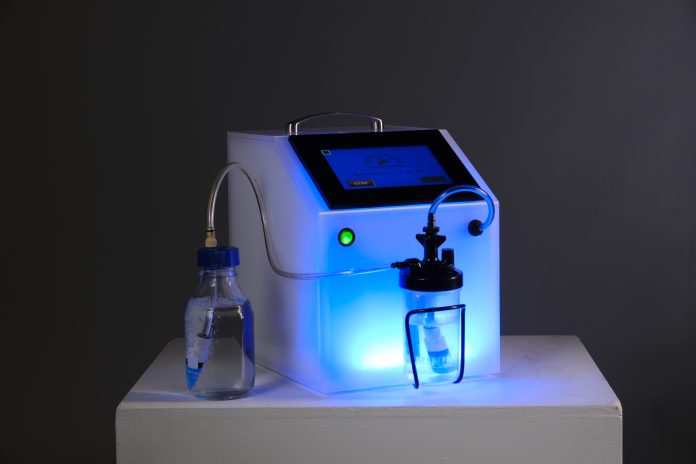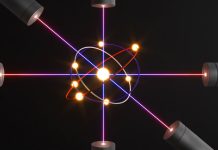Oxyhydrogen is a mixture of hydrogen and oxygen produced through water electrolysis. Inhalation offers therapeutic benefits, often delivered via nasal cannulas or masks. Recent research highlights molecular hydrogen (H2) as a powerful antioxidant with anti-inflammatory properties; Alexander Nenov from Water Fuel Engineering explains
Oxyhydrogen, also known as Browns Gas, has an interesting backstory. It gets its name from Professor Yull Brown, a Bulgarian-Australian scientist who made significant strides in refining the process of electrolysis in the mid-1970s. Electrolysis involves using an electrical current to split water (H2O) molecules into hydrogen and oxygen components, resulting in this unique gas containing H2 and O2 in a 2:1 ratio.
Water electrolysis, the process of splitting water into hydrogen and oxygen gases, was first observed by Dutch traders in the late 18th century. One commonly used industrial method for electrolysis is alkaline water electrolysis. This method uses an alkaline solution, typically potassium hydroxide (KOH), to increase the conductivity of water, thereby enhancing the efficiency of the process.
With oxyhydrogen inhalation therapy, there are several methods of inhaling the gas mixture to experience its therapeutic benefits. One common method is through a nasal cannula, which delivers the oxyhydrogen directly into the nasal passages for quick absorption into the bloodstream. Another method is through a face mask, which covers the nose and mouth to allow for deeper inhalation of the gas. Additionally, some people also choose to inhale oxyhydrogen through specialised devices such as nebulisers.
Hydrogen therapies research
There is now a comprehensive body of research showing that molecular hydrogen (H2), arguably the active component of oxyhydrogen gas, acts as an effective antioxidant, anti-inflammatory and anti-allergy compound. For almost 20 years, dedicated scientists across the globe have been testing the physiological effects of H2 in laboratories and in clinics.
Since 2007, when Professor Ohta’s team at Nippon University, Japan, first realised that molecular hydrogen (H2) acted as a selective neutraliser of pernicious reactive oxygen and reactive nitrogen species (colloquially, but incorrectly, termed free radicals), research into H2 as an effective therapeutic has gained global attention. To date, approximately 2,000 pre-clinical and analytical studies have been conducted, indicating that hydrogen therapies are non-toxic, well-tolerated, and can have therapeutic effects in a wide range of bodily systems, including the central nervous, cardiovascular, digestive, and musculoskeletal systems.
This small molecule, it seems, can have a large effect, particularly as a regulator of oxidative stress and immune reactions, including inflammatory responses.
Anti-inflammatory effects of molecular hydrogen
The cycle of inflammation underpins many health conditions we face in modern society. For example, clinical research has linked cellular inflammation with the progression of neuropathies, metabolic diseases and muscle and joint degeneration. Inflammation is the body’s way of protecting areas of the body that have become dysfunctional due to illness or injury, for example.
However, when pro-inflammatory molecules, such as cytokines and chemokines, are released into the bloodstream, they often damage the cells that make up the blood vessel walls. This assault on the cellular epithelium increases permeability of the vessels, which in turn leads to increased chemical signalling and migration of white blood cells, thereby perpetuating the inflammatory cascade.
Many reports on the effects of hydrogen as a medical gas describe the significant reduction in pro-inflammatory cytokine production, reduced neutrophil infiltration and activity, and decreased oxidative damage to DNA after administration. These protective mechanisms are accomplished through interaction with multiple cellular processes that promote homeostatic cellular function, including enhancing mitochondrial fitness and energy production, and modulating such responses as inflammatory, neuronal, and hormonal signalling.
Although, we’re not entirely sure of H2’s modality, it is likely that because of the small nature and relative lack of chemical reactivity (a combination that enables the H2 molecule to travel inside of cells) H2 is able prevent the excessive oxidation of cellular components by the most highly reactive oxygen and nitrogen species (such as the hydroxyl radical). This allows the cell to devote less of its resources to dealing with stress and more to normal and restorative processes, ultimately improving both cellular viability and vitality.
HydroVitality
HydroVitality sets a new benchmark in quality and innovation. It incorporates an award-winning automation system that continuously monitors and optimises operational parameters to ensure efficient electrolysis with minimal energy consumption, all without requiring manual adjustments from the user.
The system’s hybrid cell architecture, merging the benefits of wet and dry electrolysis, is uniquely designed to function without a proton exchange membrane, thereby eliminating common challenges such as overheating and noisy fans. Resulting in quiet, uninterrupted operation that requires no chemical handling, tubing changes, or internal cleaning, delivering a streamlined user experience.
Operating HydroVitality is remarkably simple: press a single button, select the therapy duration, and attach the nasal cannula. The device takes care of the rest, providing consistent, high-purity oxyhydrogen output.
HydroVitality is not merely a wellness tool; it represents a systemic approach to wellbeing. By supporting cellular homeostasis, redox balance, and immune modulation, oxyhydrogen therapy offers a comprehensive adjunct to the management of fatigue, inflammation, musculoskeletal discomfort, and respiratory burden. All of this while also enhancing recovery, relaxation, and sleep quality.
Since its commercial release in 2021, HydroVitality has been deployed in over 15 countries across three continents. Users, ranging from clinical practitioners to wellness advocates, consistently report improvements in range of motion, skin texture, muscle recovery time, energy levels, mental clarity, and general quality of life.
At Water Fuel Engineering, our mission is rooted in collaboration, sustainability, and science-led innovation. We invite individuals, researchers, healthcare professionals, and institutions worldwide to join us in building a healthier, cleaner, and more self-sustaining future through safe, evidence-informed oxyhydrogen technology.
HydroVitality – where engineering meets wellness, and research meets reality.
Disclaimer
The information presented here is for educational purposes only and is not intended as a substitute for professional medical advice, diagnosis, or treatment. Always seek the advice of your physician or other qualified health providers with any questions you may have regarding a medical condition or treatment. Never disregard professional medical advice or delay in seeking it because of something you have read in this article.

This work is licensed under Creative Commons Attribution-NonCommercial-NoDerivatives 4.0 International.











